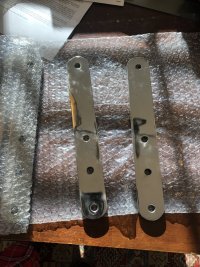It might be worth $30K investment if you plan to sail this 1971 E27 around the world. Or even if you plan to keep it ten years, or forever. But if you plan to just sail locally and improve skills and move up in size or condition eventually, minimal dollars makes more sense.
Figure the most you could possibly sell the boat for and be guided by that. It's probably what you paid for it, no matter what upgrades you accomplish.
I couldn't agree more. I go back and forth with moving up in size or staying with my '77 27. For now I'm staying put with the 27. Each year I "invest" in something that makes the boat more reliable and safer. (note: it was a mess when I bought it some years ago). This year it's new standing rigging. I have heard of 27 rigging failures, and I'd like to focus on expanding my cruising experience. So, I decided to make the chainplate modification along with the new rigging. On my 27 there is evidence of plenty of water intrusion at the chainplates over the years, thus my decision. I also think it's a personality trait. It simply makes me more comfortable. I made my chainplates and am waiting for the rigger to help. Incidentally, he did the same job on another 27 that had lost a chainplate.

